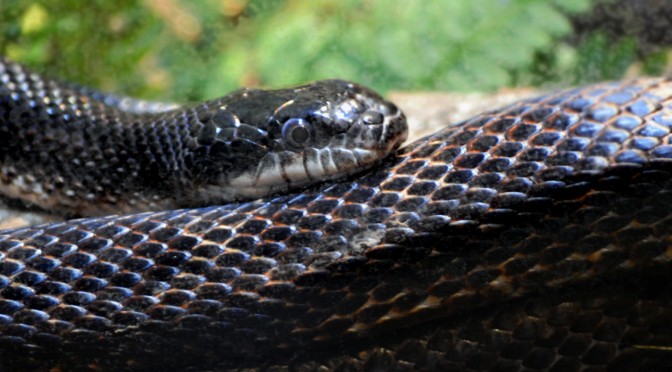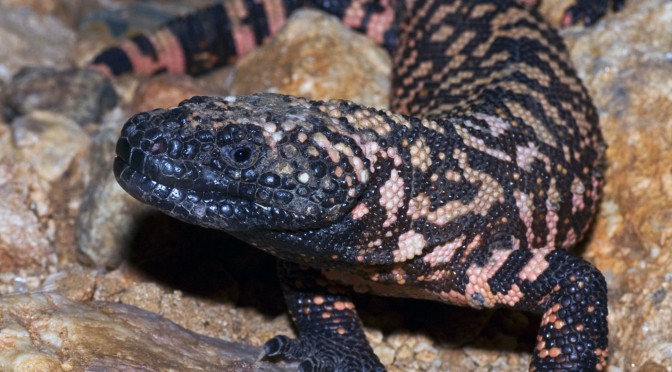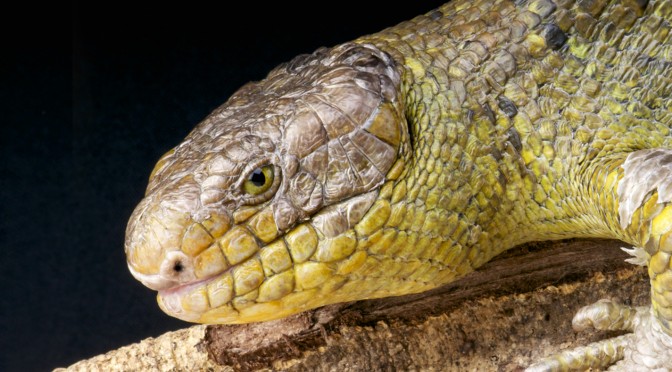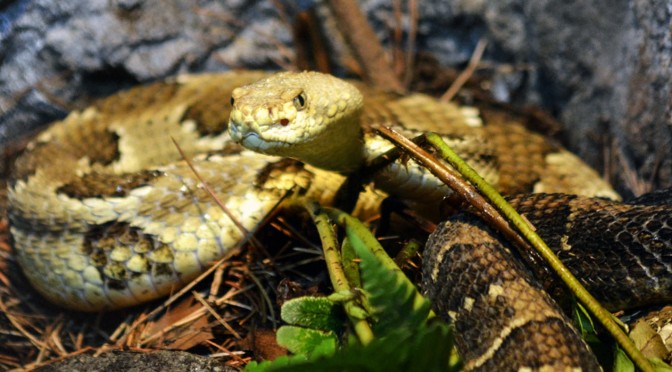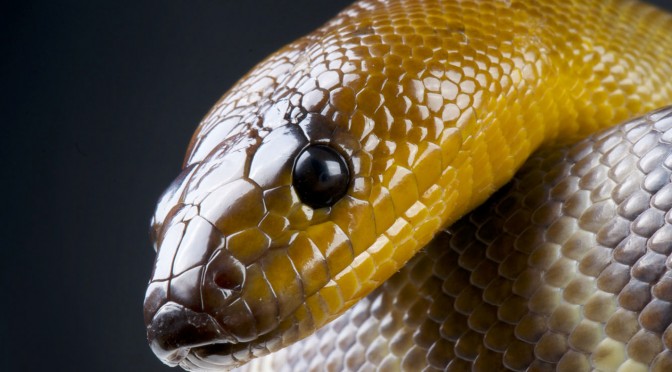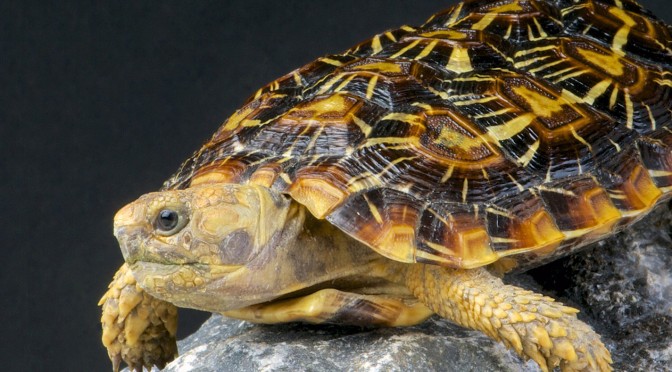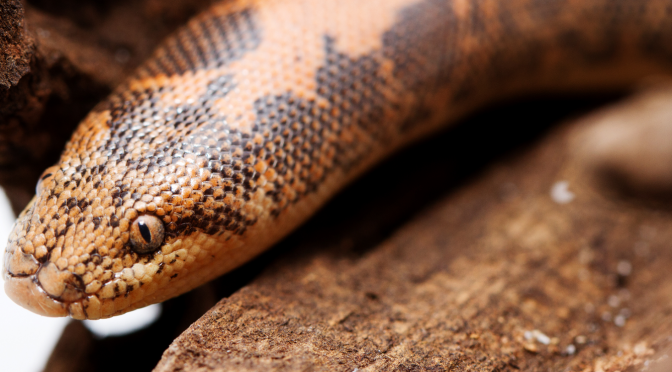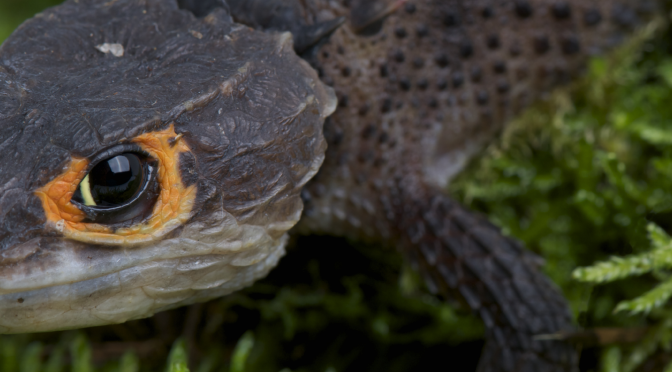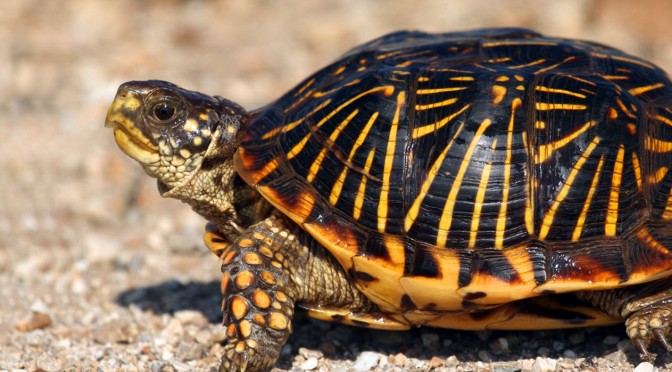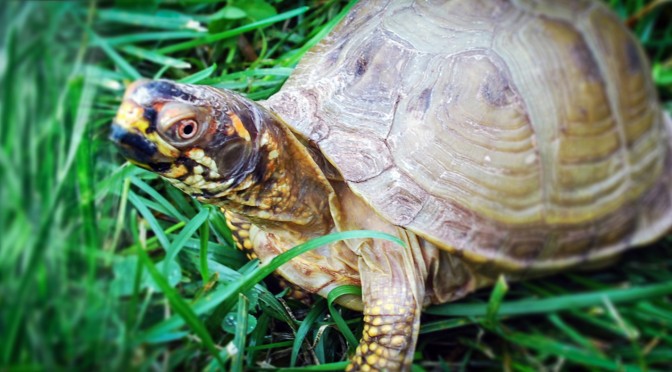NOTE: Education Animals are “behind-the-scenes” animals & only appear to the public during Educational events. This includes scheduled events or programs such as daily animal mingles, private onsite programs, and zoo reaches. For more information, please reach out to edureservations@lvzoo.org.
Program and General Information
The three-toed box turtle is a vulnerable species of turtle found near sources of water in woodland and meadow habitats of South-Central United States. They are a smaller species of turtle growing up to an average of 4-6 inches in length. They are brown in color with occasional colored spots. They get their name from their hind feet, which only have 3 toes. Three-toed box turtles are omnivores and eat a variety of insects, spiders, worms, small reptiles, carrion, greens, veggies, and fruit. Breeding occurs in June/July with a female looking for a place to nest.
Females lay 3-8 oval-shaped eggs, which incubate for 3 months before hatching. This species faces challenges from human activities, including agriculture, urbanization, and the pet trade.
Diet
Three-toed box turtles are omnivores. meaning they eat a variety of meat and plant matter. Younger box turtles are predominantly carnivorous eating insects, snails, worms, other small reptiles, and even smaller mammals. As they mature, they become more herbivorous and their diet is focused more on land plants. They are particularly fond of earthworms!
Habitat and Range
The three-toed box turtle is found throughout the South-Central United States in Missouri, Oklahoma, Texas, and Alabama. They favor cool, damp weather, and will often find a shady area in which to roam. They have been found up and down the East Coast, and individual three-toed box turtles are known to migrate to different areas to maintain a preferred level of humidity in their environment.
You can often find three-toed box turtles soaking in puddles, seeps, and springs. They prefer warmer temperatures but will tolerate colder nighttime temperatures. If temperatures become too cold, box turtles will dig into the leaf litter and soil to brumate. Brumation is the reptile equivalent of hibernation.
Reptiles’ activity, temperature, heart rate, and respiratory rate drops during brumation. Because metabolic rate drops during brumation, animals that brumate do not need to eat before entering a state of inactivity since it will take longer for their food to digest.
Common Physical Features
Three-toed box turtles are a smaller species of turtle, growing up to 4.5-6 inches in length. They are the smallest of the T. carolina subspecies and are duller in color. Their shells are usually a uniform olive-brown, and they often lack the bursts of red, yellow, and orange that other box turtles may have. To know if you are looking at a true three-toed box turtle look at its hind feet. If there are 3 toes on the hind feet then you indeed have a three-toed box turtle! Box turtles interbred with common box turtles will sometimes have 4 toes on their hind feet. Males and females will differ in color. Males tend to be a bit brighter with red/orange eyes, while females are darker with yellow/brown eyes.
A turtle’s shell is actually a part of it’s body. The turtle’s ribs and backbone fuse together to form the shell. The shell is covered with a layer of protective plates called scutes. These scutes are made of keratin, the same stuff that makes up our nails and hair, and can be shed. Turtles shed their scutes for numerous reasons: as they grow, to replace damaged scutes, and to shed off any parasites or disease.
Adaptations: Box turtles are not your typical turtle. Most turtles are adapted to life underwater with flat, streamlined shells, webbed feet for swimming, and a primarily carnivorous diet. Box turtles, on the other hand, have domed shells, thicker limbs with claws for digging, and are more omnivorous, all of which allow for a more terrestrial lifestyle. So while they may be labeled as one, box turtles are actually a bad example of a typical turtle!
Box turtles also have a unique plastron, or bottom of the shell. Their plastron is actually hinged, which allows the turtle to close up completely inside their shell, hence the name “box” turtle. The domed shell allows the turtle to pull its limbs in and the hinged plastron will act like a trap door and shut the turtle inside. This will protect the box turtle from predators trying to claw or bite at it.
Box turtles have sharp beaks for tearing food items into smaller, more manageable bite-sized pieces. Their sharp claws allow them to dig in the dirt to find food and help them traverse their environment easier.
Behavior and Life Cycle
Box turtles are oviparous, meaning they lay eggs outside the body. Three-toed box turtles are quite solitary animals and will only come together in order to breed. Females of this species can store sperm for several years and produce fertile offspring up to four years after copulation.
Mating usually takes place after they come out of brumation in June/July. Each year, females will usually have 1-2 clutches of eggs, which consist of 3-8 oval- shaped eggs. These eggs are white, brittle, and incubate for about 3 months. Hatchlings will only be about 1-inch long when born! The temperature of the box turtle nest will determine the sex of the hatchlings: 72-81 degrees tend to be males, 82 and above tend to be females.
Conservation Messaging
Together with Nature
Habitat destruction and fragmentation are a major concern for the box turtle populations and have put them at risk. Human activities, such as residential and commercial development, farming and ranching, construction of roads and railways, and fishing have all contributed to the decline of three-toed box turtle numbers.
What can we do?: If you see a box turtle on the road and would like to help it be sure you are moving the turtle in the direction that it was headed. These animals limit themselves to a range about the size of a football field and if you remove them from their home range they can become confused and disoriented and may not be able to find their way home.
Never remove an animal from the wild! Some well-meaning people will trap and relocate “pest” animals but the truth is, trapping rarely ends well for wildlife and is not a long term solution. While you might be thinking you are helping that animal, most people don’t realize the amount of care and time that goes in to caring for these animals, and removing them from their natural environment can be detrimental to the wild populations. If wild animals are not causing damage or posing danger, the best solution is to coexist! If you come across injured wildlife please call your local wildlife rehabilitation center as they are better equipped to handle and care for that animal.
The most important thing that we can do to help sustain their habitats is to “Leave No Trace”. Once you leave nature, no one should know that you’ve been there. This means bringing out anything that you’ve brought in. Additionally, leaving the environment unaltered is equally important.
Supporting wildlands and forests that are habitable to this species can help protect box turtles numbers from further declining.
Fun Facts
- In rare instances, three-toed box turtles can exceed a century in age!
- They are the official state reptile of Missouri.
- Box turtles are diurnal, meaning they are active during the day.
- There are currently 6 recognized subspecies of T. carolina – 4 native to the US and 2 native to Mexico.
Bibliography
